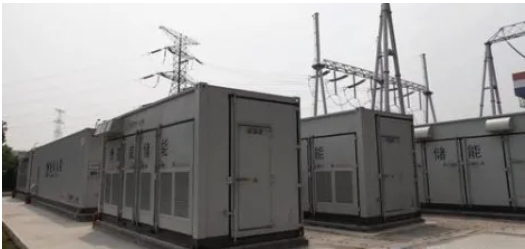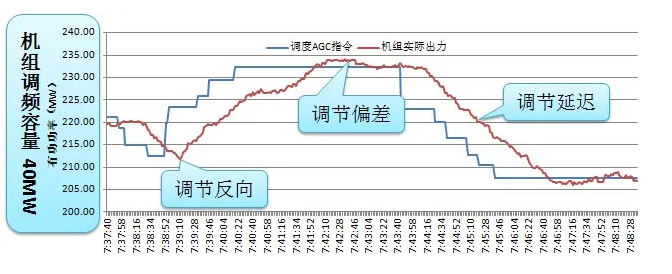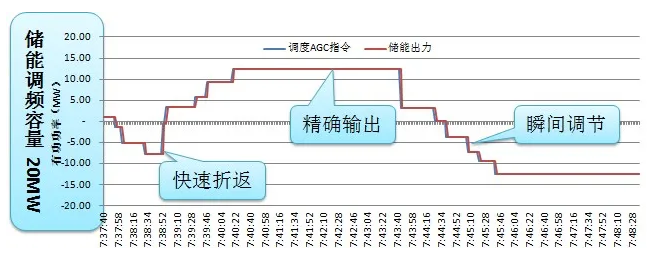
hotline:
17715390137
Tel/Wechat:
18101240246 (Technology)
0512-68565571
Email:mxenes@163.com (Sales Engineer)bkxc.bonnie@gmail.com
Scan the code to follow or search the official account on WeChat:
2D Materials Fronrier After paying attention,
click on the lower right corner to contact us,
Enter enterprise WeChat.
Professional Services Online

已传文件:photo/202082185539682.png

At present, my country‘s major regional power grids are heavy, and large hydropower and thermal power units (coal-fired units/gas-fired units) are mainly used as power grid frequency modulation power sources. Respond to system frequency changes by adjusting the output of the FM power supply. However, hydropower and thermal power units have certain limitations in frequency modulation.
1. Limitations of frequency modulation for thermal power units
(1) The frequency modulation performance of thermal power units is poor (ie K value): long response time lag, low ramp rate of the unit, not suitable for short-term frequency modulation, low frequency modulation accuracy, and sometimes even reverse frequency modulation. The main reason is that the energy conversion time is long (coal grinding, combustion) and the unit has an insensitive area for speed regulation.
(2) The units participating in the primary frequency regulation are restricted by heat storage, and the frequency regulation is obviously insufficient or even far from reaching the theoretical value of the frequency regulation.
(3) The climb rate of the units participating in the secondary frequency modulation is slow and cannot accurately follow the AGC command.
(4) Participation in frequency regulation has aggravated the wear and tear of the unit, which will damage the life of the unit, increase fuel consumption, increase operating costs, and increase waste discharge and the system‘s hot reserve capacity.
Thermal power units are suitable for large-scale, continuous, and one-way load lifting, while the frequency modulation tasks of power systems are often small-scale, frequent, and foldback adjustments.
Second, the limitations of frequency modulation of hydropower units
(1) Units are unevenly distributed throughout the country, mainly in the southwest and coastal areas.
(2) Hydropower units are restricted by geographical location and seasonal changes (the wet season and dry season are different), and are affected by the season and geographical environment. Some units even have requirements for flood control and drought resistance, and the frequency modulation capacity provided is limited.
Three, the characteristics of battery energy storage system frequency modulation
(1) Good performance and excellent K value: It has the characteristics of fast response and precise tracking, and is more efficient than traditional frequency modulation methods.
Within the rated power range, the electric energy storage system can complete the specified power output with an accuracy of more than 99% within 1s, and its comprehensive response capability fully meets the power conversion requirements within the time scale of AGC frequency modulation, which greatly exceeds that of conventional thermal power plants The adjustment ability. If the electric energy storage frequency modulation technology is adopted, the AGC tracking curve can almost coincide with the AGC command curve, that is, problems such as adjustment direction, adjustment deviation, and adjustment delay will not occur.
Generally, the AGC frequency modulation function of the power grid is mainly provided by conventional power sources including hydropower and thermal power units. Since these power sources are composed of mechanical components with rotating inertia, especially the AGC frequency modulation performance of thermal power units, there is still a gap compared with the regulation expectation of the grid, which is specifically manifested as delays in regulation and deviation (overshoot and undershoot), as shown below The picture shows:

The AGC tracking curve of energy storage almost coincides with the AGC command curve, that is, problems such as reverse adjustment, deviation adjustment and delay adjustment will not occur. The comprehensive AGC adjustment performance of energy storage is much better than that of thermal power units, as shown in the figure below:

(2) The short-term power throughput is strong, can be charged and discharged, two-way adjustment, can be "one enemy three", independent or combined with conventional FM power supply, greatly reducing the capacity requirements of traditional FM power supply.
Regarding the system‘s AGC frequency modulation function, the adjustment capability of energy storage technology is several times that of traditional units. Assuming that the regional power grid has a 20MW power demand within 2min, that is, the overall climbing ability of the system is required to be 10 MW/min. If the thermal power unit has a ramp rate of 2%/min, a thermal power unit with a capacity of 500 MW is needed to provide regulation, and the 20MW energy storage system can instantly complete the demand for power increase, that is, under this regulation rate demand , The AGC frequency modulation capability provided by the 1MW energy storage system is equivalent to that of a 25MW thermal power unit. If the power regulation demand of the system is 20MW/min, the regulation power substitution effect of energy storage is 25 times that of coal-fired units. It can be seen that the more urgent the adjustment needs of the system, the more obvious the advantages of energy storage technology.
The research report of the Pacific Northwest National Laboratory in the United States puts forward similar conclusions through more complex simulations: energy storage technology with rapid adjustment capabilities can provide frequency modulation services more effectively; according to the power characteristics of the California power market, on average, storage The frequency modulation effect is 1.7 times that of hydropower units, 2.5 times that of gas-fired units, and more than 20 times that of coal-fired units. (Conservative estimates also have more than 10 times the performance)
Fourth, the economic comparison of battery energy storage system frequency modulation and traditional frequency modulation power supply
The economic comparison analysis of energy storage technology and traditional FM power supply is carried out on three main aspects, namely, the investment cost of the FM power supply itself, the operation and maintenance cost during the lifetime, and the impact on the total frequency modulation cost of the power system:
(1) The average annual investment in energy storage systems is 2 to 3 times that of thermal power (it has a certain relationship with the cooperation model). However, considering that there is a nearly 20-fold difference between the two in the actual AGC frequency modulation effect, and there is still room for cost reduction in energy storage products in the future, the equivalent investment of energy storage systems still has certain advantages. From the perspective of long-term power investment and construction, the construction of a relatively small number of energy storage projects can slow down the investment in thermal power capacity construction with frequency modulation as the main purpose, and can greatly save the overall social investment.
(2) The operating cost of the energy storage system to provide frequency modulation also has certain advantages. Since the process of AGC up and down adjustment can be approximately regarded as the process of energy balance, and the charging and discharging process is to provide frequency modulation services for the system, the actual cost of energy storage is mainly the energy consumption determined by the operating efficiency, and its operating cost is relatively low. small. Thermal power units have long assumed the AGC function. Under operating conditions with frequent changes in output, the following three main costs will be incurred: increased coal consumption, increased unit wear and power loss due to reserve capacity.
(3) The biggest advantage of energy storage technology participating in frequency modulation services is that it has fast and accurate response capabilities, and the regulation efficiency of unit power is high. The frequency modulation method with fast response capability can reduce the capacity required for frequency modulation in a wide area. The battery energy storage system has a fast response speed and a strong short-term power throughput capacity, which helps to improve the power quality and system stability of the grid. Especially when the power grid is weak, there are a lot of wind power or other renewable energy into the power grid, the application of this technology is very useful. With its unique technical and economic characteristics and high environmental benefits, the large-capacity battery energy storage system is effectively combined with the automatic power generation control system to maintain the system frequency within the standard range, reduce the need for spinning reserve capacity, and provide black start. An effective way of ancillary services.
Reference book: "Frequency Modulation Technology of Battery Energy Storage System" edited by Li Jianlin, Huang Jiyuan, Fang Kai, etc.
This information is from the Internet for academic exchanges. If there is any infringement, please contact us and delete it immediately

| Reminder: Beijing Beike New Material Technology Co., Ltd. supplies products only for scientific research, not for humans |
| All rights reserved © 2019 beijing beike new material Technology Co., Ltd 京ICP备16054715-2号 |